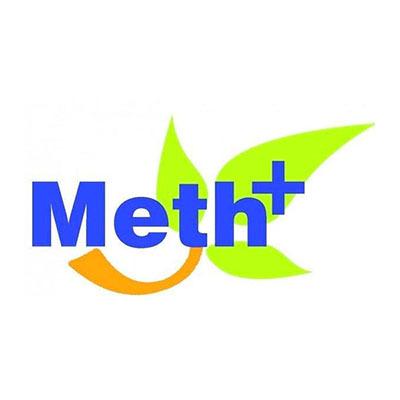Protease enzyme and trypsin inhibitor: Novus’s results

A large number of commercial proteases have chymotrypsin type activity and oriented toward hydrophobic amide bonds. What type activity does your protease have?
Would it affect other supplemental enzymes such as amylase or phytase?
Thank you very much for the interesting questions!
DP100 is a type of keratinase that belong to serine protease and it’s produced by Bacillus licheniformis PWD-1. Within the serine proteases, DP100 belongs to the subtilisin-like proteases group in which chymotrypsin belongs to.
Data shows that the protease DP100 can be blended with other enzymes such as phytase, xylanase and NSPase without negative effects, if any, they will complement each other. The mode of action of DP100 is to hydrolyze dietary protein and it complements the activity of other enzymes that work on different feed substrates such as phytases, xylanases and other NSPases. The combination of different enzymes with DP100 has led to improvements in performance and gut health beyond the individual enzymes. It has also been reported that DP100 improves starch digestibility in sorghum-based diets by digesting the kafirin protein that protects the starch granules.

Dear Dr Moran, thanks for your interest in the use of proteases in the presence of other exogenous enzymes. When we blend DP100 with phytase in feed, we don’t see losses of the phytase or DP100 in the feed, and when we feed the combination of the two enzymes we don’t see reduction in the response of the bird. This would indicate the protease is not degrading the exogenous phytase, if any we see benefits of including the two enzymes together. Hope this information is helpful.
Dr. Fiodor S. Marchenkov Dear DR. Fiodor S. Marchenkov, If I was you I would have no problem having a blend in dry format, but having it in Liquid I have seen this affect the recovery of the other enzymes and would strongly not recommend this.
Rgds. Arne Korsbak.


Digestibility of amino acids in hydrolyzed feather meal, flash dried poultry protein, poultry meal, and meat and bone meal fed to broiler chickens and pigs
Luciano Andriguetto YES, I agree to what you said the biggest advantage of using proteases is to destroy trypsin inhibitors, so whenever you get bad quality soya, you get good results; when you use proteases with good quality soya, we see less results with proteases.
Dr Piotr Stanislawski Uplift in AA digestibility is not increased if protein source already having better digestibility %. But still if you through light on this, will be very pleasureable. Protease also showing negative effect if used in higher dosage or unit values?
Dr Piotr Stanislawski
You are correct and I agree with you, it was about topic and maybe I found it more useful and had found very good results when soya quality.
Regards,
Kapil
Dr. Vijay Swami
Good point what I had shared is my practical experience and yes, I am not scientist but an simple chicken man.
Mercedes Vazquez-Anon
Have a nice day ! Can you tell me the name of trypsin inhibitors which are available in soybean?
Stay healthy.
Thank you for the kindness. But I needed enzymes for an experiment, but I have no way out since the borders are closed.
Does a diet based on processed soy and corn have no effect on broilers?
Mozambique
João Marime Maquena
I am from shrimp farming industry. Most of the farmers are using fermented soya in the feed. Trypsin inhibitor is one of the anti nutritional factor. Can we use any protease enzyme to counter this and which product is suitable for this purpose?
Thank you
Morning, hello there. Very interesting discussion, thanks for illustrating us. I have a question for Mercedes and Juxing; your answers, reflections, I assumed, are considering enzymes addition in dry form. What would be the effect if we would spray proteases + phytases + NSPases, let´s say more or less during a short period of time, or even at the same time over the pellet? Any experience? Many thanks! All the best to everyone.
.jpg&w=3840&q=75)

Effects of superdoses of phytase on peaking Hy-Line W-36 laying hen egg production and egg quality
Pirzado M Zakria Using "cocktail" of some enzymes there is not additive effect. As the general rule, NSP are calculated as 100% for energy, phytase 100% for minerals and protease 100% for protein/AA (I mean 100% as declared). Other effect of all enzymes are calculated partly or neglected (eg. AA for NSP or energy for phytase). This is not just simple adding. Each enzyme company have own research and recommendations.
Pls ask your enzyme/premix supplier for details.

Raquel Araujo, interesting and coherent information. However, I would like to ask a question about the nature of the protein, specifically that of soy. It is known that the gastric digestion of soy protein, produces a series of peptides with an action of importance for the health of the animal, as an antioxidant, of increasing the phagocytic capacity of macrophages, among others. Thus it can be deduced that the protein source goes beyond the simple supply of amino acids. It turns out that when we replace one protein source with another, we simply rely on the amino acid composition. And when we analyze the results, we usually associate the differences in animal performance, the possible differences in the digestibility of amino acids. This reality also has implications when we use amino acid supplementation, reducing the protein source. In this context, how is the use of proteases? I will be reasoning correctly.


METHPLUS® - Replacer of DL-Methionine
Thanks all for the good discussion.
I would like to confirm a few points mentioned above:
Indeed exogenous Proteases do contribute to mitigate variability in quality from SBM (and protein sources) by improving aa digestibility and degrading Anti Nutritional Factors like Trypsin inhibitors and as well as lectin. True that the benefits are all the more important that digestibility of the amino acids of the raw material is suboptimal.
As also mentioned previously, exogenous Proteases also contribute positively to Gastrointestinal Functionality by reducing the risk of development of enteric pathogens.
Furthermore, exogenous proteases have a proven compatibility and even clear additivity with other feed enzymes such as Phytases, Xylanases & Amylases.
In a recent collaboration with Massey University, New Zealand, we at DSM have also observed synergistic effect on a.a. digestibility between DSM ProAct and DSM HiPhos:
A.J.Cowieson, J.O.B.Sorbara, G.Pappenberger, M.R.Abdollah, V.Ravindran. Toward standardized amino acid matrices for exogenous phytase and protease in corn–soybean meal–based diets for broilers. Poultry Science.
Available online 25 March 2020. https://doi.org/10.1016/j.psj.2019.12.071
Best regards,


PROTEIN HYDROLYSATE POWDER - Soya Base
Can i reduce crude protein in diets when i used protease enzyme (cibenza d100) in corn soya diets
Amin Nahal In general, yes. However, as a nutritionist, the focus needs to be on the digestibility of Amino Acids (AA) and energy value (ME) of the protease in use. It will depend on many factors mainly related to the quality of SBM used in the diets and the formulation (AA/ME ratio!) and many other factors. I will recommend you reach out to one of the R&D team members at Novus International, and they will be very happy to help you. You can also start with the Novus representative/distributor in your Region/Country!
Amin Nahal Yes, you can reduce crude protein levels in the diet when you use protease in corn soya diets, but the matrix will depend on many factors including quality of soybean meal

Guillaume Trepo, message of interest for understanding the matter at hand. However, with regard to the compatibility of the action of the protease with the different carbohydrates, exactly one of the ones that has the greatest action on the soy fiber, mannanase, was missing. The relevance of this detail is related to the fact that the fiber soybean, admittedly, has a negative effect on the swine microbiota. I believe that this enzyme may also be compatible with protease.


CYSTEAMINE HCL 50% - Digestive Enzymes
Daulat Rehman Khan
I have a similar experience. Often times non-protease products such as phytase will have a greater and more consistent uplift in amino acid digestibility than proteases. In these situations it is likely more about reduction in endogenous losses, or breakdown of complexes (phytate interactions for example).
I do believe in the POTENTIAL for proteases, but not in any commercially available product. For me this comes down to target substrate. Phytase has a well defined substrate, that is largely indigestible in the absence of exogenous enzymes. Protein on the other hand has generally high digestibility. Some individual amino acids are digested with over 95% efficiency. And this high digestibility is due to an abundance of endogenously produced proteases.
Therefore, if we are to push protein digestibilty higher we need to develop a protease that targets resistant substrates, which are not consistent. Unfortunately, all commercial proteases of which I'm aware are not designed for animal feed, but adapted from proteases developed for other applications. They are generally non-specific, and will as a result be more likely to spare the need for endogenous acitivity, than to act as a supplement to it.
Furthermore, when proteases are used with other enyzmes, I've seen data suggesting that the first substrate for these added proteases are *THE OTHER* added enzymes (Phytase, carbohydrases, etc.), thus reducing the impact of these other enzymes insead of enhancing the response.
Dear Prof. Daulant Rehman Khan
Please make sure the protease you are using is low pH gut stable. From my experience there are many so called proteases av. in the market but some of them is not pH stable. As the protease will first start function in small intestine it has to pass the stomach. From the nature point of view Proteases have the best working condition at pH 8 to 10.
Producing Feed Proteases need to take this into consideration and create them gut stable and lowering the optimum Ph.
A different thing could be your diet formulation has been too concentrated and the birds didn't need this higher digestibility and thereby didn't make use of it.
Running a trial with protease you need to be around 15 % below breeder recommendation to see the effect, that is my experience.
Rgds. Arne Korsbak

































.jpg&w=3840&q=75)

.jpg&w=3840&q=75)
.jpg&w=3840&q=75)



